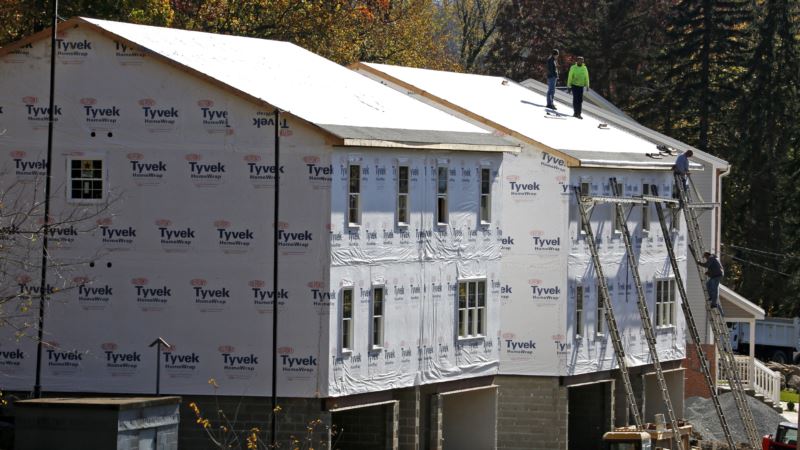New U.S. single-family home sales fell to a 10-month low in December after three straight months of solid gains, but the housing market recovery remains intact as a tightening labor market boosts wage growth. While other data on Thursday showed a bigger-than-expected increase in the number of Americans filing for unemployment benefits last week, the four-week moving average of claims dropped to levels last seen in 1973. There was also good news on the economy with the goods trade deficit falling in December as exports rose. With trade expected to have weighed on economic growth in the fourth quarter, last month's rise in exports bodes well for growth in early 2017. Home sales drop The Commerce Department said new home sales dropped 10.4 percent to a seasonally adjusted annual rate of 536,000 units last month. Economists polled by Reuters had forecast single-family home sales, which account for 8.9 percent of overall home sales, slipping 1.0 percent to a 588,000-unit rate last month. “December's decline is probably mostly a result of this volatility rather than a drop in the underlying fundamentals for housing demand, despite the rise in mortgage rates," said David Berson, chief economist at Nationwide in Columbus, Ohio. New home sales, which are derived from building permits, are volatile on a month-to-month basis and subject to large revisions. Sales increased 12.2 percent to 563,000 units in 2016, the highest since 2007. Dollar trades higher The dollar was trading higher against a basket of currencies, while prices for U.S. government debt fell. U.S. stocks were up. With the labor market considered as being at or near full employment, and pushing up wages, demand for housing is likely to remain supported. Economists so far see a modest impact on demand for housing from the recent run-up in mortgage rates, given labor market strength. The fixed 30-year mortgage rate increased 43 basis points in December from November to an average of 4.20 percent, according to data from mortgage finance firm Freddie Mac. That was the highest since April 2014. Further increases are likely as the Federal Reserve has forecast three rate hikes this year. The U.S. central bank raised its benchmark overnight interest rate in December by 25 basis points to a range of 0.50 percent to 0.75 percent. Last month, new single-family homes sales rose 48.4 percent in the Northeast to their highest level since January 2008. They fell in the Midwest, South and in the West. Labor market trend is strong In a separate report on Thursday, the Labor Department said initial claims for state unemployment benefits increased 22,000 to a seasonally adjusted 259,000 for the week ended January 21. Claims have now been below 300,000, a threshold associated with a healthy labor market, for 99 consecutive weeks. That is the longest stretch since 1970, when the labor market was much smaller. Last week's data included the Martin Luther King Jr. holiday, which could have impacted on the data. Claims tend to be volatile around this time of the year because of different timings of the various holidays. “Through the volatility they continue to show no sign of an uptrend,” said Jim O'Sullivan, chief U.S. economist at High Frequency Economics in Valhalla, New York. “We believe the trend in employment growth remains quite strong, more than strong enough to keep the unemployment rate trending down.” The four-week moving average of claims, considered a better measure of labor market trends as it irons out week-to-week volatility, fell 2,000 to 245,500 last week, the lowest since November 1973. Export of goods increases In another report, the Commerce Department said the goods trade deficit fell 0.5 percent to $65.0 billion in December. Goods exports increased $3.7 billion to $125.5 billion. The rise outpaced a $3.4 billion gain in imports. Economists expect trade to have subtracted as much as 1.5 percentage points from gross domestic product in the fourth quarter after contributing 0.85 percentage point the prior quarter. Much of the anticipated export drag will likely come from a decline in soybean shipments, after they provided a huge boost to GDP growth in the third quarter. The government is scheduled to publish its advance fourth-quarter GDP estimate on Friday. According to a Reuters survey of economists, GDP likely increased at a 2.2 percent annualized rate in the fourth quarter after a surging at a 3.5 percent pace in the July-September quarter.
US New Home Sales Fall; Weekly Jobless Claims Rise






